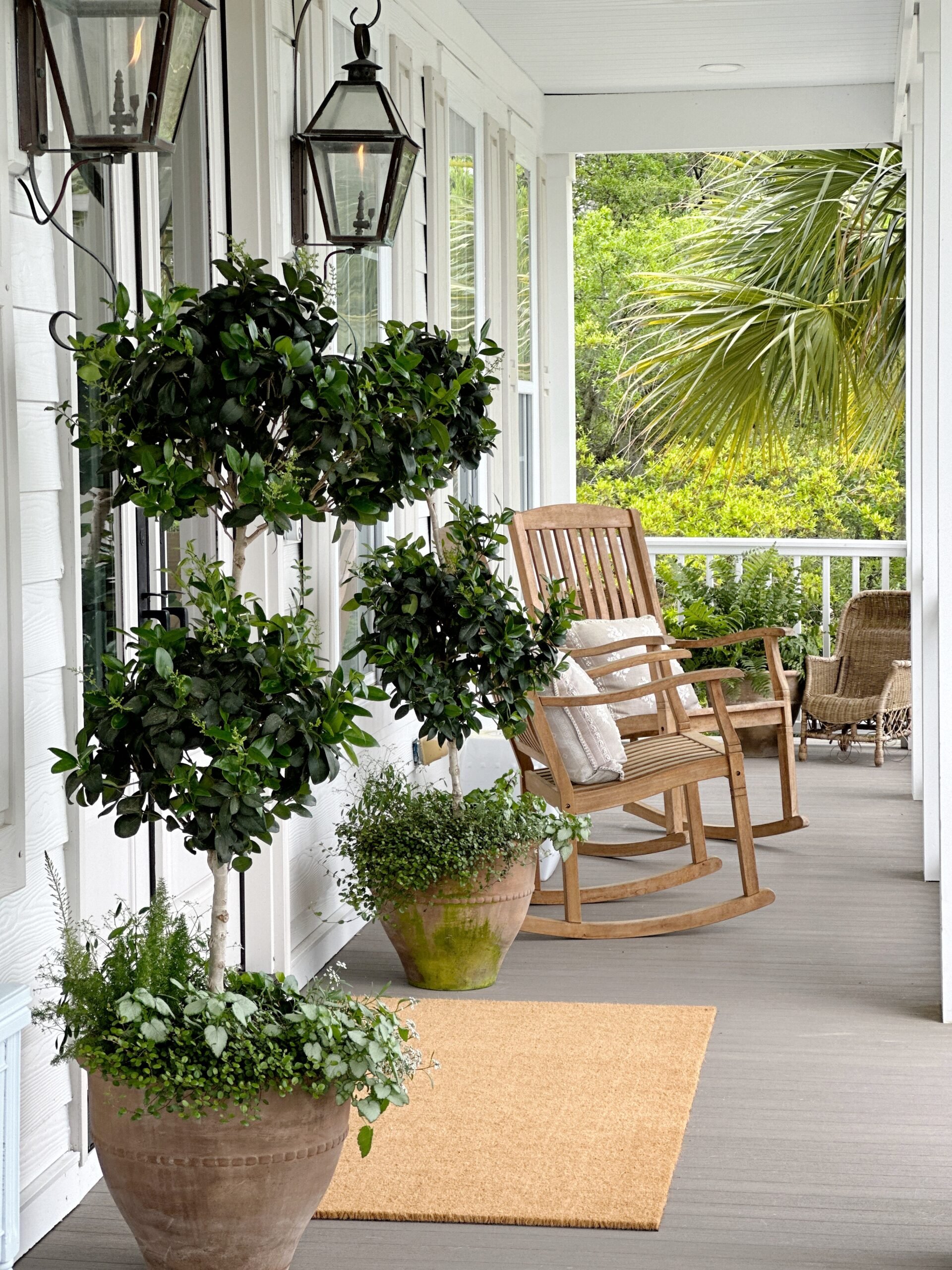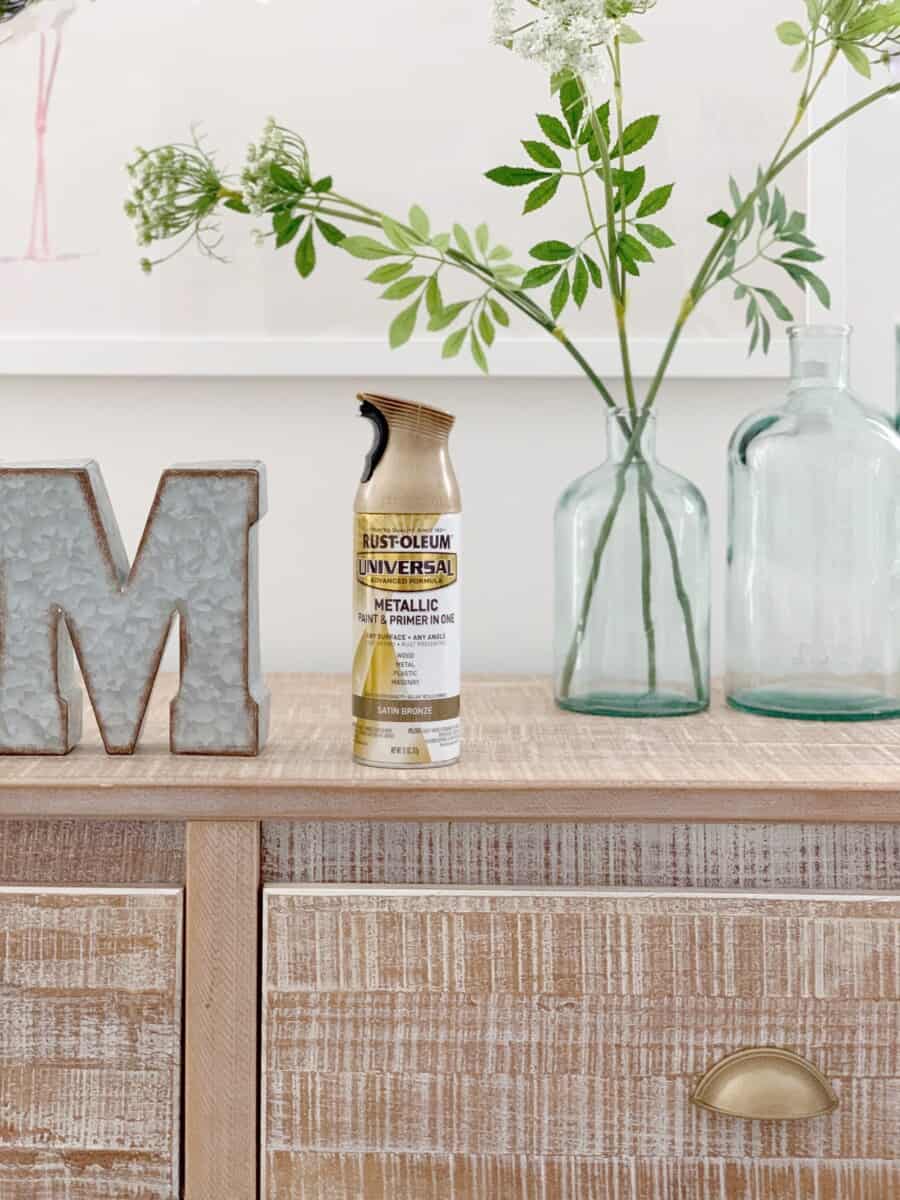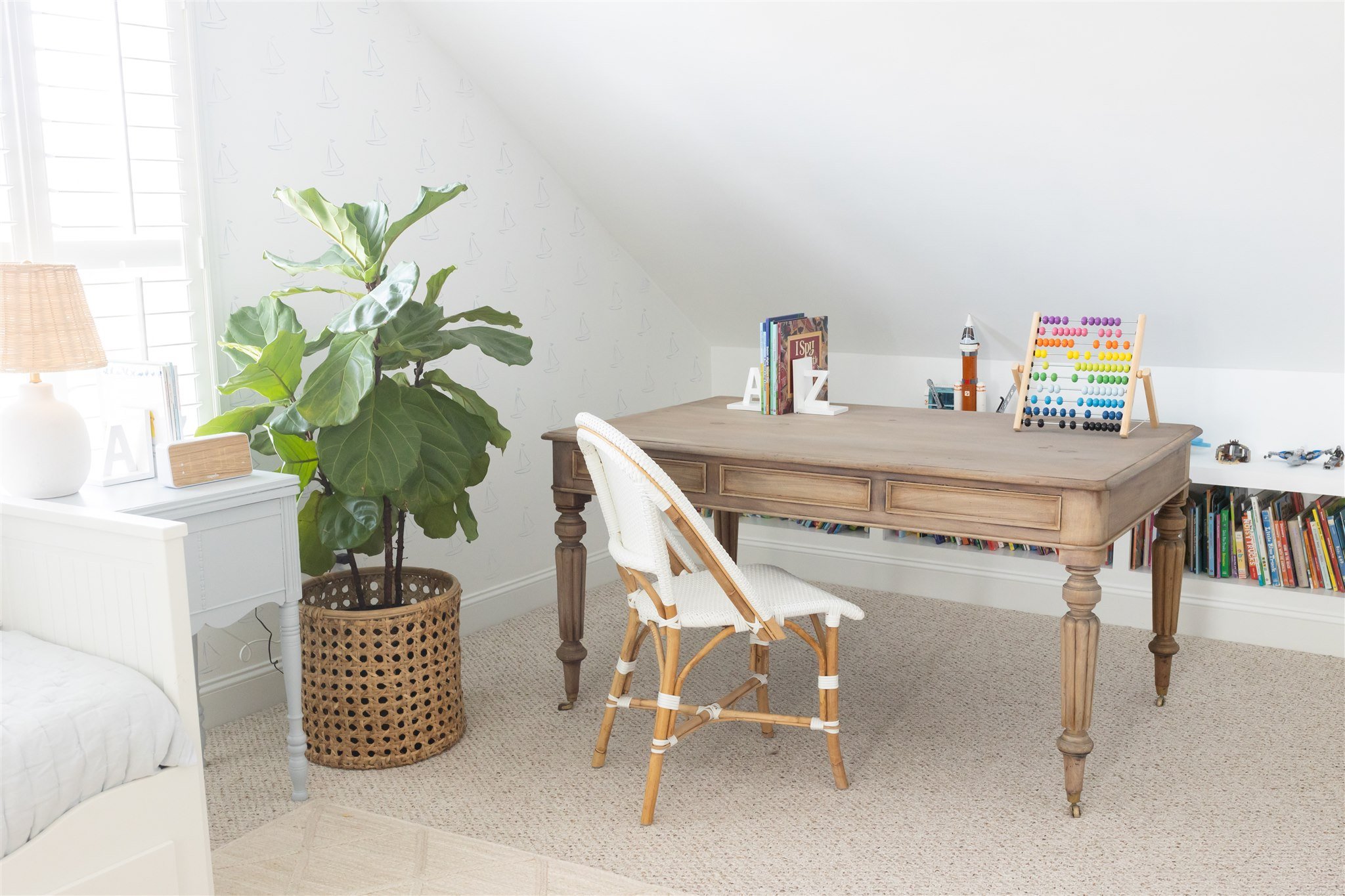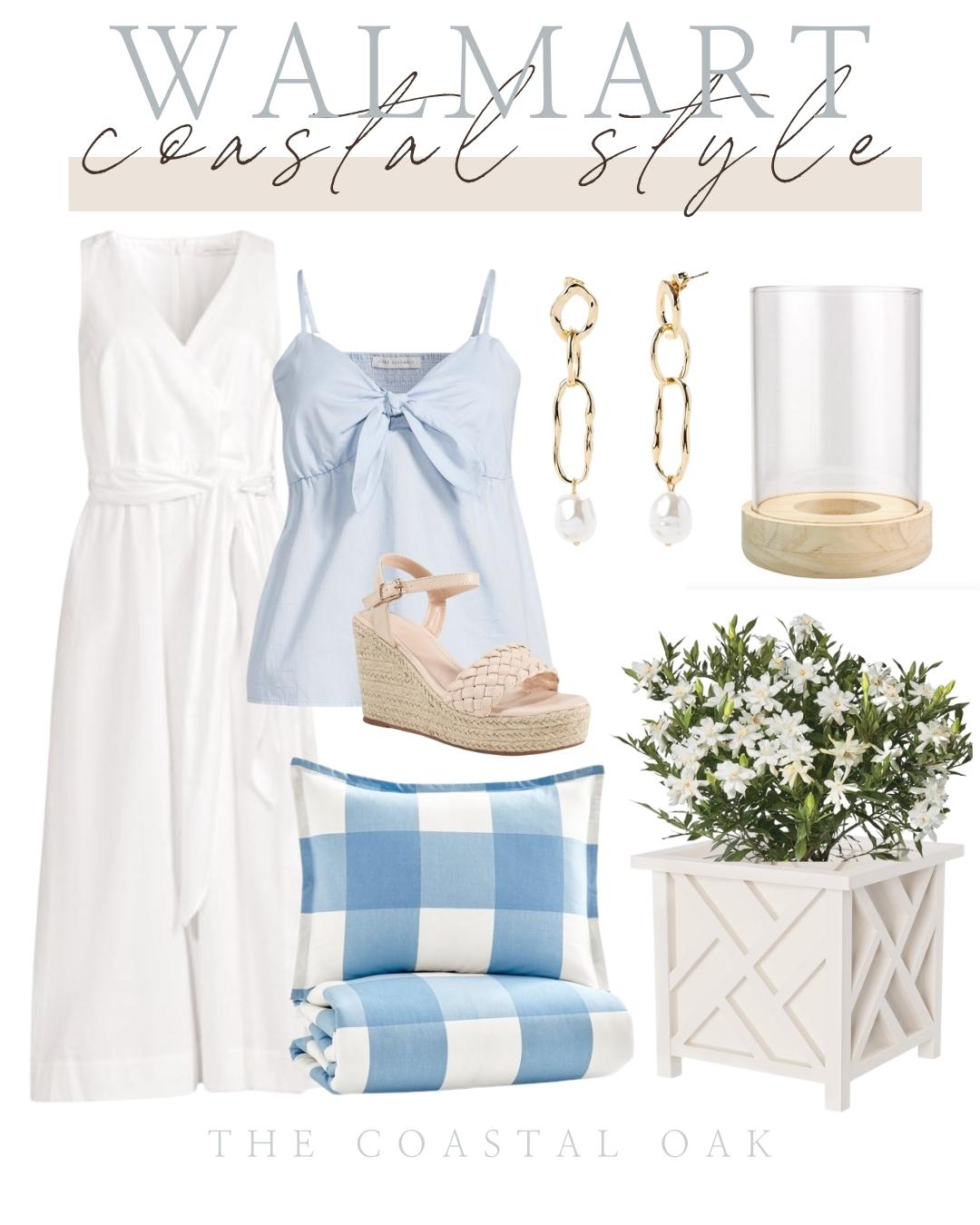The Best Ferns for Southern Planters
Take a walk around any southern city and you’ll see an abundance of fern planters everywhere. From planters to flower beds to window boxes, you can find these beauties just about anywhere. Ferns are a quintessentially southern plant and I love incorporating them into my flower pot designs each year. There are so many different varieties to choose from and I love the mix of texture that they bring to any setting. Keep on reading to learn more about all my favorite types of ferns, how to care for them, and the best ways to use them in your own planters and landscapes.

All About Ferns
So what exactly is a fern? According to the U.S. Department of Agriculture, ferns are non-flowering plants that reproduce via spores rather than flowers and seeds; they tend to grow in damp, shady areas and have been around for more than 300 million years! They’re easy to grow, relatively low maintenance, and add tons of interest to your landscapes.
When it comes to adding a touch of greenery to your home or garden in the South, fern planters are an excellent choice. These elegant, leafy plants have long been cherished for their ability to thrive in humid climates, making them a perfect fit for the southern regions. With their lush foliage and unique texture, ferns can effortlessly transform any space into a tranquil oasis.
What is a fern?
Ferns are plants known for their lush foliage and delicate fronds. They have a unique anatomy, including an underground stem called a rhizome that produces roots and fronds. The fronds, composed of a leaf blade divided into smaller leaflets called pinnae, are supported by a stalk called the stipe. Ferns also feature fiddleheads, which are tightly coiled young fronds that unfurl as they grow. Overall, ferns bring natural beauty to indoor spaces, porches, and patios!

Fern Care
Ferns are renowned for their adaptability to different climates, and the South’s warm and humid weather provides an ideal environment for these plants to flourish. Whether you live in the coastal areas or the deep inland, ferns can thrive in a range of conditions, bringing life and vibrancy to your outdoor spaces. They are an excellent choice for adding a pop of green to your porch, patio, or garden, creating a refreshing ambiance that complements the southern charm.

To ensure the health and longevity of your fern planters, it is important to provide them with the right care. Here are a few essential tips:
Light & Shade
Ferns prefer indirect light and do best in dappled shade. Super dense shade or harsh afternoon sun are both too much for ferns to handle.
Watering
They need at least an inch of water weekly, especially in their first year. If you prefer to keep them in planters or pots, I recommend watering them a frequently depending on your zone to ensure the soil stays moist throughout the season. Just don’t overwater and ensure they have proper drainage to avoid root rot.
Planting
Ferns do best in soil that is rich with organic matter and they do not like dense clay soil. One great thing about ferns is that most of them can survive in USDA growing zones 2-10 (depending on the species) so you can grow some variety of fern just about anywhere in the U.S.. They are also very drought-tolerant and deer resistant, making them relatively easy to grow.
Ferns are relatively low maintenance which is another reason I love them. They typically don’t require fertilization and don’t need to be pruned – dead fronds will fall away as needed, but you can clip them if you want to improve air circulation. I like to lightly shake mine to remove the dead leaves or use a blower on low setting to blow them away.
If you decide to plant your ferns in the ground rather than pots, you can winterize them by covering the base with straw, tying the fronds carefully, and wrapping them in fleece. You can also propogate them in the spring by dividing the root clumps and replanting. Dig up with entire root clump and cut it into 6-inch sections – each section needs to have at least one good frond sprouting. Then replant each clump and water thoroughly to propogate!
SHOP THIS POST



Fern Species
As I mentioned, there are so many different types of ferns that it can get a little overwhelming when trying to decide which ones you want in your own yard. Some of the most popular ferns in the south are the ostrich fern, macho fern, Boston fern, maidenhair fern, foxtail fern, asparagus fern, lemon button fern, and autumn fern.
My personal favorites are the macho, asparagus, foxtail, maidenhair, kimberly queen, and silver lace! I love keeping them in pots as opposed to planting them in the ground because I can get a little more creative with the design and it allows me to move them around easily if I want to mix things up.
- Macho Fern – I absolutely adore these; they have broader leaves than the standard Boston fern and their fronds are shinier and less jagged; they look great alone in a planter if you want to keep things simple; when left in the ground, they can reach heights of 3-4 feet and widths of up to 6 feet. These are a show stopper and I love them in planters on a porch!
- Asparagus Fern – These have feathery foliage and make good “thrillers” in your pots; they actually aren’t ferns, but rather a perennial closely related to garden asparagus; they’re mildly toxic to humans and pets and can be invasive in certain climates (like in Florida, Texas, and Hawaii)
- Foxtail Fern – These have full, lush stems of pine-needle like leaves that give them their name; it’s also a member of the asparagus family and not truly a fern; they’re very low maintenance and look great alone in pots, paired with other plants, or grouped together in the ground
- Maidenhair Fern – They have delicate, feathery foliage and can be grown indoors or out; unlike most ferns, these prefer a more alkaline soil PH – you can add ground limestone to your containers to help with this; they require high humidity and need to be misted if kept indoors
- Kimberly Queen Fern – These have large, sword-shaped fronds with upright bushy growth and are very full and lush; they origniated in Australia and do best in zones 9 – 11; this variety prefers partial sun and can grow 2-3 feet tall and 2-4 feet wide
- Silver Lace Fern – These are a smaller fern variety and have silvery white variegations in the center of each frond; they’re usually grown as houseplants, but can survive outdoors in zones 9A – 11
Fern Planters
If you want to add some ferns to your springtime pots, be sure you’re pairing them with other shade-loving plants. I love mixing asparagus or foxtail ferns with elephant ears (also known as caladiums), impatiens, begonias, and coral bells in pots. Ferns will typically act as the “thriller” in your pots (be sure to include a thriller, filler, and spiller to keep it balanced!) since they’re so large and upright.
I prefer to keep my macho ferns and Kimberly Queen ferns solo when potting them because they’re so large and make a great impact on their own, plus they look so classic and elegant flanking a front door or on the corners of your porch or deck. Nothing says “welcome to the South” quite like hanging ferns on a big front porch! Ferns can also look great in your landscaping design as a pathway border or in an empty shaded area where other plants struggle to thrive.
One thing I’ve learned is that it’s very important to frequently water and rotate ferns, especially when you keep them in pots or planters. I try to give mine a hearty watering every other day if I can. Like most plants, ferns grow towards the sun even though they prefer a dappled shade environment. To keep the growth even, make sure you rotate your pots every week or so!
Fern planters can be incorporated into your outdoor spaces in various ways, giving you the freedom to unleash your creativity. Here are a few design ideas to inspire you:
- Hanging Baskets: Utilize hanging baskets to showcase cascading ferns, such as the Boston Fern. Hang them from your porch or pergola, allowing the lush fronds to drape gracefully and create a captivating visual display.
- Container Gardens: Create stunning container gardens by combining ferns with other shade-loving plants like impatiens or caladiums. Vary the heights and textures to add depth and visual interest to your planters.
- Vertical Gardens: If space is limited, consider vertical gardening with ferns. Install a living wall or a trellis and arrange ferns in a tiered fashion. This not only maximizes space but also adds a striking focal point to your outdoor area.

Ferns Indoors
Ferns have long been cherished as a versatile and enchanting addition to indoor decor. Their lush, vibrant foliage and delicate fronds bring a touch of nature’s elegance into any space. Whether adorning a living room, office, or even a bathroom, ferns have the remarkable ability to infuse life and tranquility into their surroundings.
With a wide variety of species to choose from, each offering its own unique shape, color, and texture, ferns cater to diverse aesthetic preferences. From the classic Boston Fern with its gracefully arching fronds, to the exotic Bird’s Nest Fern with its striking rosette-like form, there is a fern to suit every interior style.
Not only do ferns create a visually appealing atmosphere, but they also contribute to improved air quality by purifying indoor air and increasing humidity levels. Their low-maintenance nature makes them an ideal choice for busy individuals seeking to introduce greenery into their homes without excessive care requirements. By incorporating ferns into indoor decor, one can effortlessly transform any space into a sanctuary of natural beauty and tranquility. Just don’t let them get too dry!
Southern Ferns
Are you a fern fan or do you prefer to add a bit more color to your spring planters? I love the versatility and timeless Southern look of ferns and they will forever be a favorite in my home! They’re easy to care for, elegant, and come in so many different varieties so I know I’ll always find a fun new combination to try. Let me know in the comments below your favorite type of fern and how you like incorporating them into your own garden designs!












Great article! Ferns are beautiful added to a southern landscape. We just finished building our home on Lake Marion. I have a corner in my backyard that I’m developing into a fern garden. Long term plan is to develop this area as a bird oasis with bloomers and low fronds up front, caladiums and such in the middle and Kimberly and Machos behind. My next step is adding a trickling bird bath. Your ferns are beautiful!!
Oh Judy, this sounds incredible and a bird oasis is perfect!
Great post! I love the look of ferns, I just wish they could tolerate the salt air/coastal wind we get in Florida!
Oh gosh, wish these would work for you also! But, you get the tropical plants so enjoy those beauties!